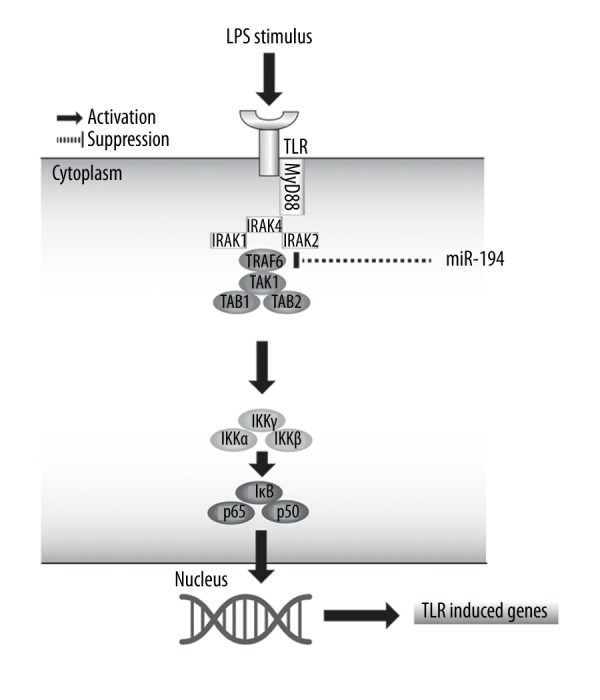Figure 8.

A hypothetical model for the role of miR-194 in LPS-induced inflammation in NP cells. After LPS stimulation in NP cells, TLR4 of cell membranes was polymerized, and then recruited MyD88 inside the cells. Recruited MyD88 bonded with IRAK. Subsequently, TRAF6 was activated by IRAK to induce the phosphorylation and degradation of IκB kinase, leading to the release of NF-κB from IκB/NF-κB complex and transferred into the nucleus to regulate the LPS/TLR-induced genes. In addition, miR-194 inhibits NF-κB signaling and expression of TLR-induced genes by targeting TRAF6.
